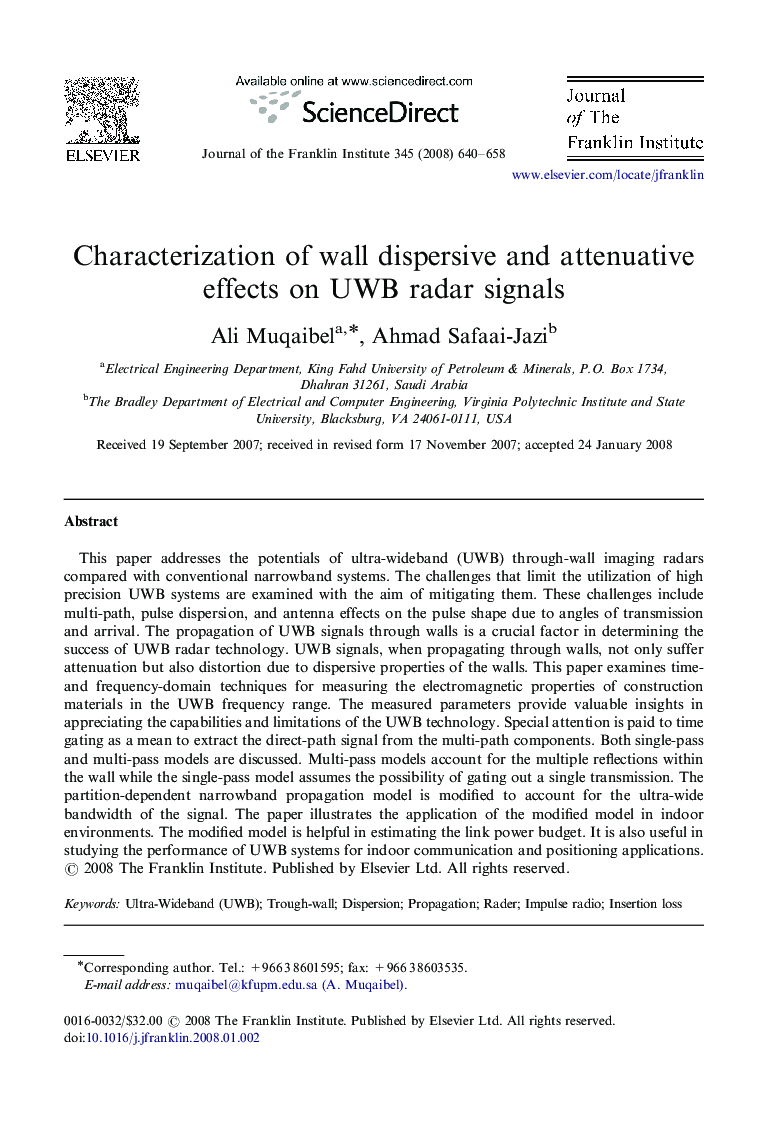| کد مقاله | کد نشریه | سال انتشار | مقاله انگلیسی | نسخه تمام متن |
|---|---|---|---|---|
| 4976452 | 1365635 | 2008 | 19 صفحه PDF | دانلود رایگان |
عنوان انگلیسی مقاله ISI
Characterization of wall dispersive and attenuative effects on UWB radar signals
دانلود مقاله + سفارش ترجمه
دانلود مقاله ISI انگلیسی
رایگان برای ایرانیان
کلمات کلیدی
موضوعات مرتبط
مهندسی و علوم پایه
مهندسی کامپیوتر
پردازش سیگنال
پیش نمایش صفحه اول مقاله

چکیده انگلیسی
This paper addresses the potentials of ultra-wideband (UWB) through-wall imaging radars compared with conventional narrowband systems. The challenges that limit the utilization of high precision UWB systems are examined with the aim of mitigating them. These challenges include multi-path, pulse dispersion, and antenna effects on the pulse shape due to angles of transmission and arrival. The propagation of UWB signals through walls is a crucial factor in determining the success of UWB radar technology. UWB signals, when propagating through walls, not only suffer attenuation but also distortion due to dispersive properties of the walls. This paper examines time- and frequency-domain techniques for measuring the electromagnetic properties of construction materials in the UWB frequency range. The measured parameters provide valuable insights in appreciating the capabilities and limitations of the UWB technology. Special attention is paid to time gating as a mean to extract the direct-path signal from the multi-path components. Both single-pass and multi-pass models are discussed. Multi-pass models account for the multiple reflections within the wall while the single-pass model assumes the possibility of gating out a single transmission. The partition-dependent narrowband propagation model is modified to account for the ultra-wide bandwidth of the signal. The paper illustrates the application of the modified model in indoor environments. The modified model is helpful in estimating the link power budget. It is also useful in studying the performance of UWB systems for indoor communication and positioning applications.
ناشر
Database: Elsevier - ScienceDirect (ساینس دایرکت)
Journal: Journal of the Franklin Institute - Volume 345, Issue 6, September 2008, Pages 640-658
Journal: Journal of the Franklin Institute - Volume 345, Issue 6, September 2008, Pages 640-658
نویسندگان
Ali Muqaibel, Ahmad Safaai-Jazi,